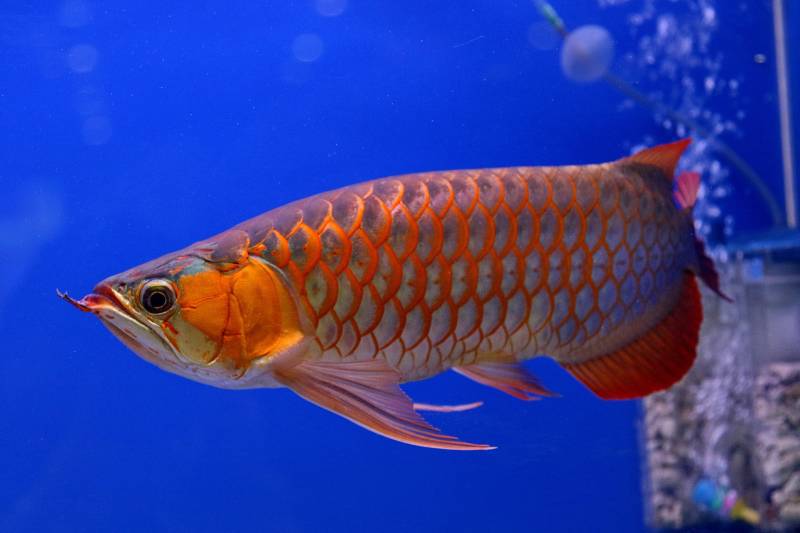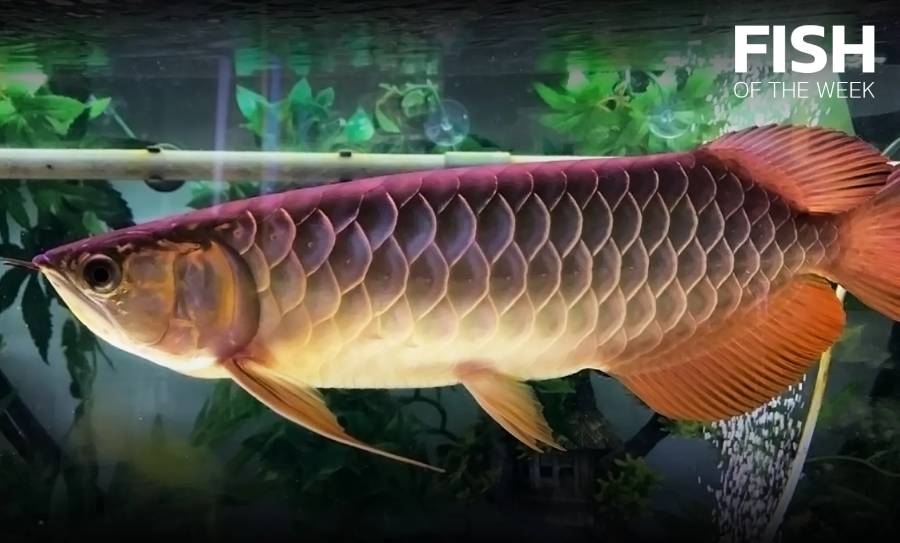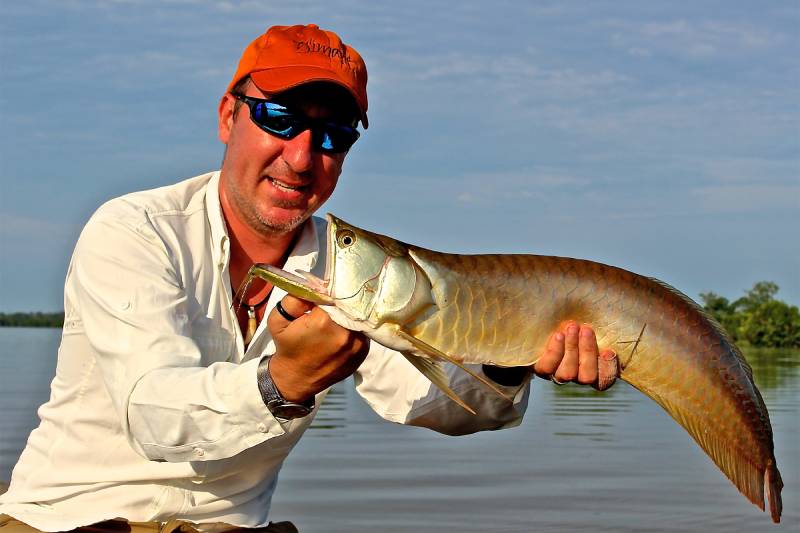Arowana is an extremely attractive ornamental fish, known by names such as “king fish” or “rich fish”, no one in the fish-keeping world does not know this fish. So, where does this fish come from, what interesting and unique characteristics does it have that makes it so loved and sought after by enthusiasts? If you are also a novice, let’s find out right away.
Origin
Arowana (Red Fish) has the scientific name Osteogleossidae, a type of freshwater bony fish that appeared more than 200 million years ago. Some regions also call them bone tongue fish because they have tooth-shaped bones on the floor of their mouths, equipped with teeth and biting into the teeth on the upper part of the mouth.
According to folk beliefs, this is a type of fish that symbolizes Kim – Money, luck and wealth with the name “rich fish”. In ancient times, only noble families could raise them. Currently, there are two main Arowana species: Asian Arowana, Australian Arowana and South American Arowana. These are also the main habitats of Arowana species. Of which, the two most popular Arowana species are Golden Dragon and Dragon Blood Dragon.

Characteristics, shape and habits of Arowana fish
Arowana fish are large fish, adults can be up to 90cm long. They are called Arowana fish because their scales are similar to Dragon scales, the size is about 2cm for adults, each fish usually has 22-26 scales on average.
Arowana fish have a long, thin body and have veins on the belly. Their heads are short, quite flat, with large gills, wide mouths, and interestingly, their eyes do not close even when underwater. Their whiskers are located on the lower lip and play a role in locating prey when searching for food. In terms of color, Arowana fish come in many colors such as red (Huy Long), yellow (Kim Long), blue (Thanh Long), silver (Ngan Long), etc. The more beautiful the color, the more sought after and the higher the price.
Arowana fish generally have a leisurely, gentle, graceful swimming style, especially when swimming with a silvery shine. They often prefer to live alone instead of living together, they are aggressive, their predatory nature and high positioning ability make it difficult for any species to escape.
What do Arowana fish eat?
Arowana fish like fresh food from small fish to insects, shrimp, and prawns. You can still feed them with ready-made dry pellets, but you need to pay attention to the expiration date, making sure the food is not moldy or shows signs of spoilage. For Arowana fish to grow quickly, you can feed them once a day, when they are larger, reduce to 1-2 times, avoid feeding too much as it affects the fish’s digestive system and dirty the tank.

How do Arowana fish reproduce?
Mother Blood Dragon Arowana fish reproduce by laying eggs. Accordingly, the eggs are incubated in the mouth of the male fish until they hatch
Currently, wild Arowana fish are in danger of being endangered, you can only find Arowana fish raised and bred in an artificial environment.
How much do Arowana fish cost on the market today?
There are many different types of Arowana fish, each with its own attractive beauty in color and size. The rarity makes the price of Arowana fish quite high, the price difference will depend on the species and scale color. In addition, if you buy a baby Arowana fish, the price will usually be about 50% cheaper than an adult. Below are some of the Arowana species that are receiving the most attention from the aquarium community today.
Golden Dragon Fish
The most expensive is the Golden Dragon Fish (or Malaysian Golden Dragon), this species is bred in the state of Berak, Malaysia. When mature, the Golden Dragon Fish is as golden as a 24k gold bar, a symbol of luck and prosperity.
Blood Dragon Fish
Called Blood Dragon because their scales are dark red, extremely eye-catching bright red. This is also the fish species at the top of the list of favorite dragon fish species today. The price of Blood Dragon is determined based on size, weight, and skin pigmentation. The higher the index, the more expensive the price. In general, the price will range from 12-14 million VND/fish, adult fish range from 15-20 million VND/fish.
Red-tailed Golden Dragon Fish
This species originates from Indonesia on the island of Sumatra, the humpback and dark back are the highlights of the Red-tailed Golden Dragon. Their price is quite cheap, ranging from 2 million VND/fish, depending on size and color.
Arowana Fish
Arowana Fish mainly live in Southeast Asia. The Arowana fish is divided into 4 main types: normal Arowana, Borneo, Nami and Golden thread. They have green, jade green or gray green scales and are usually the cheapest because the color is not as attractive. The average price of Arowana fish ranges from 2 million/fish.
Silver Arowana
This species lives mainly in South America, in the Amazon River. The highlight of Silver Arowana is its large size, which can be 100-120cm long, its body is quite similar to a knife, its lower jaw is protruding, and its silver scales are sparkling.
How to raise and care for Arowana
Arowana is a strong species, not difficult to raise, but requires careful care, meeting good living conditions for the fish to be healthy and have beautiful colors. Below are some things you need to keep in mind when raising Arowana.
A large enough tank
To raise Arowana, you first need to make sure the tank has enough space because they are quite large. For example, if the fish is about 15cm, the tank needs to be 120*45*45cm in size, for larger fish, increase to 180*60*45cm. The tank should be placed in a quiet place, can get light in the morning or afternoon, have a lid, only leave a small space the size of the fish’s mouth because the Arowana is very strong and can jump out when you are not paying attention.
Clean water source, no toxins
For water sources that need to be clean, no toxins, you should equip a good filtration system to avoid fish from getting sick during the raising process. The appropriate water quality index for raising Arowana is: Amonia = 0, Nitrites > 10, pH = 6.5-7.5. To get this index, you can put in the fish tank an amount of salt equivalent to 1% of the water capacity. And increase the oxygen machine to work at full capacity. When buying fish, you need to adjust the pH in the fish bag and the tank to be equal, wait for the water in the tank to settle for 48 hours before releasing the fish.

How to release Arowana into the tank
Turn off the lights in the tank and soak the newly purchased Arowana bag in the tank for about 15-20 minutes. Then open the fish bag, scoop a ladle of water from the tank and pour it into the fish bag so that they can get used to the new living environment. Every 5-7 minutes, scoop a ladle of water like that until the fish bag is full, then stop and wait another 5 minutes. Use your hand to open the mouth of the bag, dip the whole bag into the tank so that the fish can swim out automatically. After releasing the fish into the tank, do not rush to feed the fish, but wait more than 24 hours after the fish have gotten used to the new environment, then put food in for them.
Above are the shares about the characteristics, species as well as how to take care of Arowana fish, hopefully the article of Animal World brings useful information to interested readers, especially those who want to raise Arowana fish.
